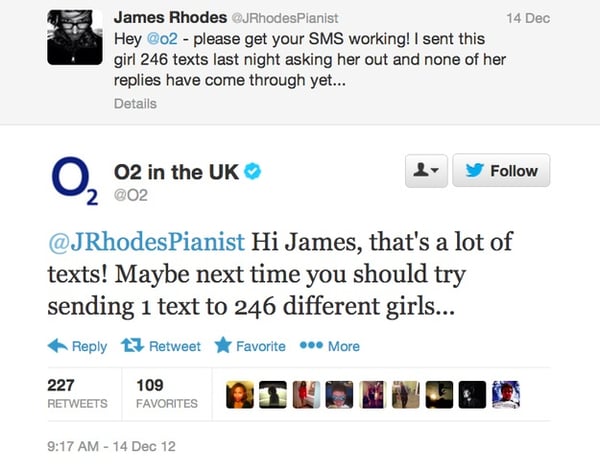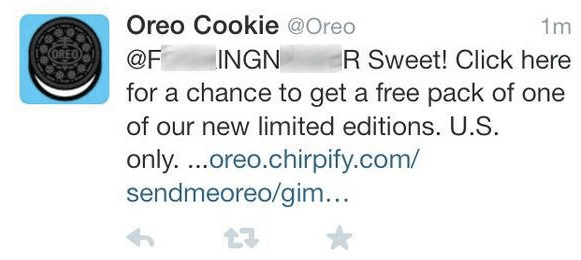Have you got some sort of social media presence? Of course you have. Everyone has. Even your grandmother has a Facebook page, as well as one for each of her six cats.
You’ll be hard pushed to find a company that doesn’t have a profile on one of the social platforms too, whether it’s a flourishing Instagram audience or ghost town of a Facebook group.
You’re reading this blog, so I guess you must be one of them, and I’m also going to assume you haven’t cracked how to actually grow that presence.
It’s not easy, but in this blog I’m going to share six tips that will help supercharge those likes and followers. But first…
Why are you on social media in the first place?
And no, the correct answer to this question is not the aforementioned, ‘because everyone is.’
‘Everyone’ isn’t your target market. ‘Everyone’ doesn’t care about what you sell.
If you haven’t worked out who your ideal target market is yet, stop reading this blog and check out this free eBook on identifying your buyer personas. It will tell you all about the benefits of using personas, and you’ll learn all about the principles of customer segmentation.
Already know who your buyer personas are? Fantastic. Let’s move forward.
Where are your personas hanging out?
When we think about the main social media platforms, Facebook, Twitter and LinkedIn probably spring to mind. They’re three of the largest and most well established around — but that doesn’t mean you should jump on these without thinking about it first.
For example, if your target market is Generation Z, your focus should be Snapchat and Instagram. Not Facebook where, as far as they’re concerned, ‘old’ people hang out. Conversely, if your company manufactures and sells stair lifts, these two photo-sharing channels are the last places you should be investing marketing budget.
LinkedIn is a B2B platform, so if you’re operating in a B2C market you may as well forget about this all together.
Part of your persona work should include identifying where they spend their time online, and this will help in deciding which platform you should be focusing on.
What are you trying to achieve?
It’s amazing how many organisations set up social media profiles without first thinking about what they’re trying to achieve by being there.
Social media is an awesome brand awareness tool, but it’s not always the best traffic and lead driver. People are on social media to connect with friends and family, not to be sold to, which is why the most successful brands are the ones who seek to educate, inform and entertain their followers — not convert them.
Before setting up a social media profile (or beginning a push to grow one) come up with some SMART goals. These will help you to focus your efforts and avoid posting content for the sake of it.
6 tips for growing your social presence
Okay, now we know who we’re targeting and what we’re trying to achieve, let’s dive into the ways you can grow your social following.
The human touch
Social media is all about connecting with real people, and organisations that communicate like a faceless corporation will be given the cold shoulder by users.
This doesn’t mean sharing anything and everything that you’d share on your personal profiles, everything still needs to be relevant and feed back into your buyer personas, but it does mean communicating your brand’s personality. A key element to this is how you reply to people who engage with you.

Many of the biggest brands aren’t afraid of injecting humour into their social channels, and it can be a very powerful tactic for growing your following.
Make it as easy as possible for people to engage
Engagement is the key to growing your social profiles, but you need to first make it easy for that to happen.
Complete your social media profiles, including your website URL, branded hashtags and a clear (but brief) About section. Be sure to use relevant keywords in your bios too but, just as you would for SEO, avoid over using them.
Check out this awesome blog over on Sprout Social for more social media optimisation tips.
Use video MUCH more
Is the future of marketing video? No, it’s robots and holograms.
Video is very much the present.
If you’re only sharing links and images on your social channels then you’re doing it wrong. The main platforms are already favouring video over any other type of content, and by 2020 it is estimated that online videos will account for more than 80% of all consumer internet traffic.
Video stops users in their tracks on social feeds, urging them to pause for a moment to check out what’s happening. Think about when you’re in a restaurant with a TV screen. Most people’s eyes are drawn to it, whether it’s showing something interesting or not.
It’s the same on social media, and if you’re not producing informative or entertaining video content you’ll fall behind the competition. It doesn’t have to be expensive either — most camera phones are now powerful enough to capture video that is of a high enough quality.
We recently ran a campaign to coincide with Afternoon Tea Week, with five videos offering digital marketing advice, and we saw far better engagement than we did for copy-only campaigns we’d ran previously.

Don’t be afraid to automate
This might sound at odds with my earlier advice to apply ‘the human touch’, but by automating in the right way you can easily expand your social content creation without having to hire a team of marketers or a dedicated social media agency.
Platforms such as Sprout Social, Hootsuite and HubSpot’s marketing software allow you to schedule social media posts ahead of time, but make sure you keep on eye on user engagement off the back of them. Whatever you do, absolutely positively DO NOT automate user replies. Here’s just one example of it going wrong for Oreo back in 2014:

They hadn’t taken into account the fact automatic replies would include the user’s Twitter handle, regardless of how offensive it was.
Promote your social profiles throughout your marketing
Most organisations have icons linking to their social profiles somewhere on their website, but a lot of the time they aren’t obvious, or particularly enticing to a user.
You shouldn’t limit these social calls-to-actions to just your website though. Include them in your email sends and blog posts too, and encourage social interaction more actively than with a simple logo.
Pay to play
When you first get started with social media it can be disheartening how small your audience is for those first few months.
You might be posting and sharing great content your buyer personas should love, but you don’t have a big enough fanbase to appreciate it.
There are two ways you can look to remedy this.
First of all, you can simply promote your profile to gain new fans. On Facebook for example, your page will be suggested to users you choose through targeting.

Personally, I’m not a fan of this tactic. Why should people like your page if they don’t know anything about you or the sort of content they’ll see as a result?
A better strategy is to instead promote your content. You can still target your buyer personas as before, but this tactic is far more likely to create genuine user engagement. What’s more, when one person likes, comments on or shares a post, their friends see it, too. You might not gain a page like or follow straight away, but it’s building that relationship with the user that is essential for successful social media marketing.
Stay Updated with Our Latest Insights
Get expert HubSpot tips and integration strategies delivered to your inbox.



